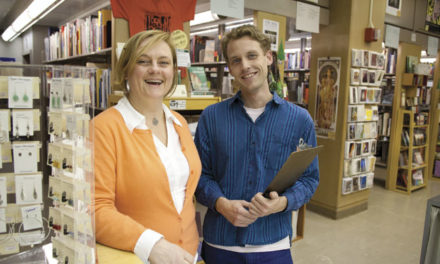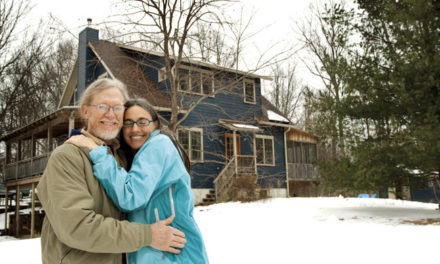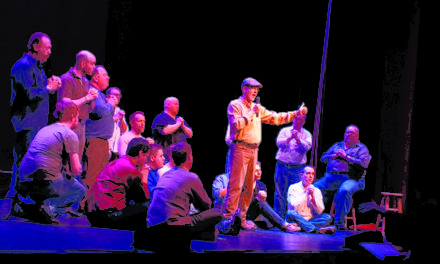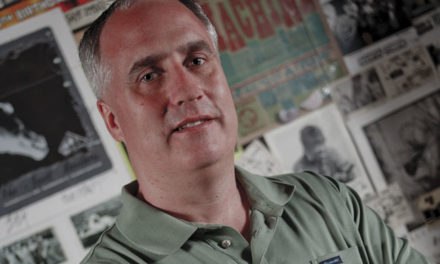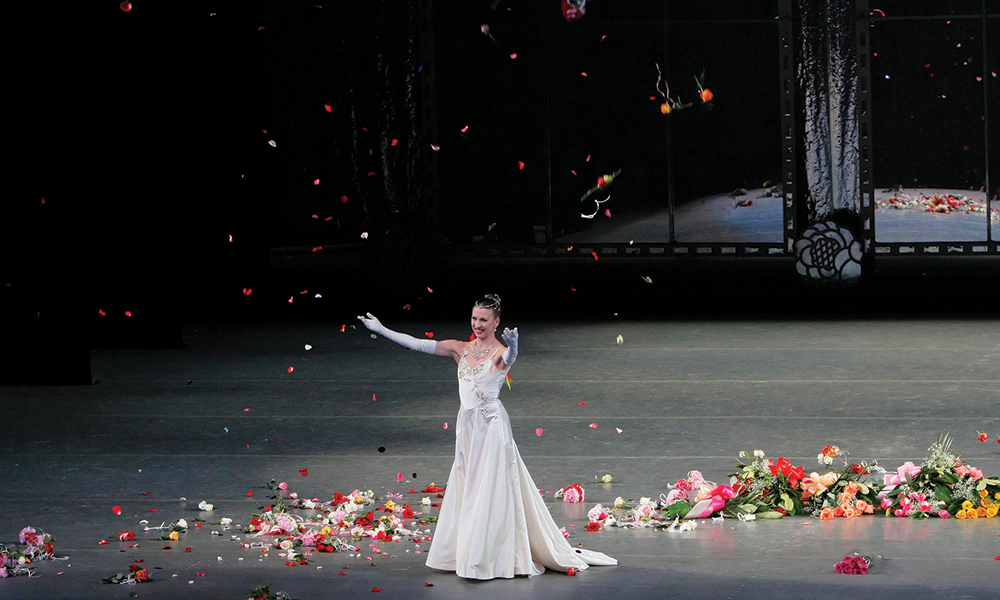
Kyra Nichols bids adieu to adoring fans after her farewell performance at the New York State Theater in Manhattan on June 22, 2007. Photo by Paul Kolnik/The New York Times.
BY JANET MANDELSTAM
Kyra Nichols and Carla Körbes first met in 2000. Nichols was a principal dancer at the New York City Ballet and an established star of the company when Körbes joined the corps de ballet.
Their careers took divergent paths—one stayed in New York City, the other left. But these two critically acclaimed ballerinas are in the same company once again. This past summer, both joined the Indiana University Jacobs School of Music dance faculty.
Kyra Nichols danced at the New York City Ballet for 33 years and was one of the last dancers whose career was shaped by renowned choreographer George Balanchine. She performed lead roles in nearly 50 Balanchine ballets and was a favorite of Jerome Robbins, who choreographed several works for her. When Nichols retired in 2007, at the age of 48, The New York Times dance critic Alastair Macaulay wrote, “We mourn the departure of this greatest ballerina of the last 20 years.”
Nichols had been dancing since the age of 4. Her first teacher was her mother, Sally Streets, a former dancer who set up a studio in a Berkeley, California, basement. “Half the room was a pool table, and half a ballet school,” Nichols recalls. “I held on to the pool table.” She enrolled in a summer course at the School of American Ballet in New York City when she was 12 and joined the company after her 16th birthday.
At IU, Nichols, 59, holds the Kathy Ziliak Anderson Chair in Ballet, previously held by the late, renowned Violette Verdy. Nichols says following in Verdy’s footsteps was one of the reasons she came to Bloomington. “Violette gave me my first scholarship to travel from Berkeley to the School of American Ballet, and I lived with her mother when I was asked to stay and study for the year,” Nichols says.
The other reason, she says, is she hadn’t really found her niche since retiring. She taught widely and served as ballet mistress for the Pennsylvania Ballet, where her husband, David Gray, was executive director. Coming to the Jacobs School, she says, was “a once in a lifetime offer.” She and Gray moved to Bloomington with their two sons, Joe, 20, and Cameron, 15.
At Jacobs she is teaching technique and pointe classes, and working with students on the repertoire for their fall show. The students, she says, “are so hungry for knowledge. They really listen to your corrections.”
Carla Körbes began dancing at the age of 4 in her native Brazil. At 14, she appeared in a Balanchine ballet with Peter Boal, who was then a principal at the New York City Ballet. Impressed by this young dancer, Boal encouraged her to train in the United States. In 1996, the 15-year-old Körbes, speaking no English, left her family and moved to New York City to study at the company’s School of American Ballet. In 2000 she joined the corps de ballet, and in 2005 was promoted to soloist.
By then, she says, “I had lost my love for dance. I needed to see what else I could do with my dancing.” Boal had retired and become the artistic director of Pacific Northwest Ballet in Seattle, and Körbes joined him later in 2005, causing The New York Times to refer to her as “the ballerina who got away.”
In her 10 years in Seattle, Körbes’ repertoire included both classical ballets like Swan Lake, and more contemporary works by choreographers such as Christopher Wheeldon and Twyla Tharp.
But there were “some nagging injuries,” she says. “I couldn’t dance 110 percent like I wanted to.” Körbes retired in 2015 at the relatively young age of 33 and moved to Southern California. She was teaching in Los Angeles and serving as associate director of the L.A. Dance Project when contacted by Jacobs School Dean Gwyn Richards.
“The idea was that I would come out, look at the program, and give feedback,” Körbes recalls. “After one week, I felt this program was right for me.” Körbes moved to Bloomington with her husband, Patrick Fraser, a photographer, and their 1-year-old son, Rafael. As associate professor, she is teaching dance classes and coaching students for their performances.
And she continues to perform. Now 36, she says, “I still can move; I still can say things with my body.”
As for joining the Jacobs faculty at the same time as Nichols, she says it is “destiny.” Nichols agrees: “We can’t believe we’re here in Bloomington together.”
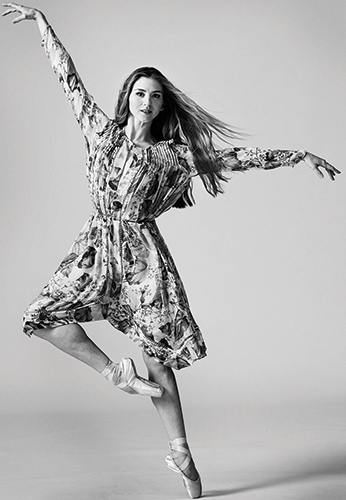
Carla Körbes called it “destiny” that she is reunited with Kyra Nichols. Courtesy photo


